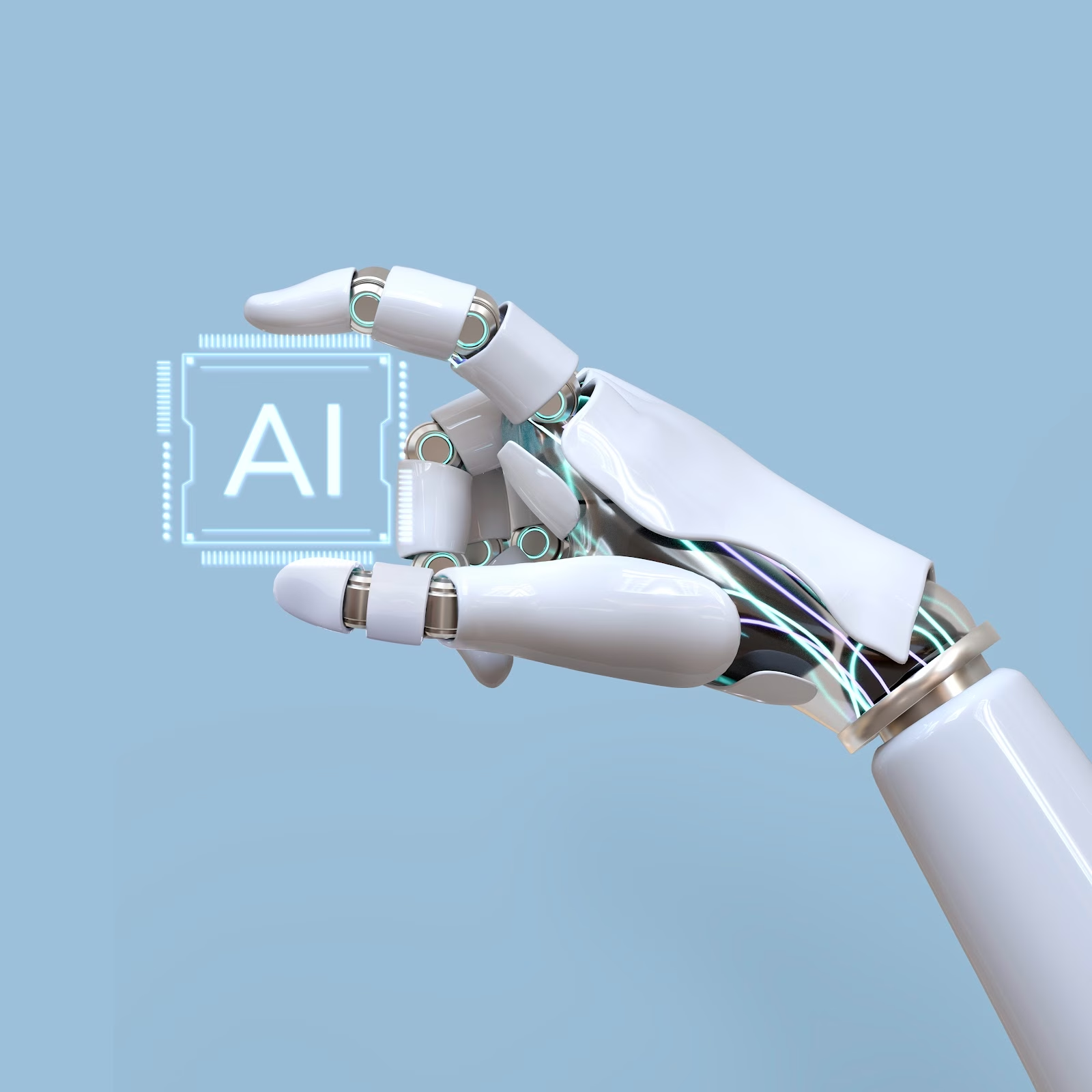
AI
SEO
AI

Artificial intelligence (AI) and process automation are radically transforming the way businesses operate. What was once restricted to large corporations is now accessible and scalable to businesses of all sizes.
This movement does not happen just through the adoption of new tools, but through the change of mentality: stop doing more of the same and start rethink entire processes based on data, integration and efficiency.
In practice, AI and process automation are very useful especially in the areas of sales, marketing and service. And it is at this intersection that technology ceases to be a cost and becomes competitive advantage.
Automating with AI is not simply replacing people with systems.
It is about redefine the role of people, delegating to machines what can be done in a repetitive, predictable and standardized way and freeing the human team to act in a more strategic and analytical way.
Traditional automation is based on fixed rules. AI applied to process automation introduces learning and adaptation.
The system doesn't just perform tasks; it learn from data, identifies patterns and adjusts flows automatically.
This allows companies to create a smarter operational structure, where:
The commercial area is one of those that benefit most from automation.
In any business that relies on lead generation and conversion, the volume of manual tasks is enormous, and the sales team often spends more time feeding spreadsheets and CRMs than actually selling.
The integration between AI and process automation completely changes this scenario.
Here's how this applies in practice:
One of the biggest bottlenecks in the sales funnel is lead qualification.
Traditionally, salespeople have to manually analyze data, read forms, and prioritize contacts.
With AI, it is possible create automated lead scoring flows, where the system analyzes real-time information such as lead source, website behavior, interaction history, and demographic data and assigns a conversion probability score.
This means that the seller will only work with truly qualified leads, reducing wasted time and increasing the closing rate.
Automation tools integrated with CRM can even adjust this score based on feedback: if the salesperson reports that a lead considered "cold" ended up closing a deal, the model learns and recalibrates the parameters automatically.
Another common pain point: salespeople who spend hours manually updating their CRM.
This process, in addition to being unproductive, leads to data loss, as many people end up skipping steps or forgetting to record information.
With process automation, every interaction recorded by email, WhatsApp, phone call or meeting can be captured and automatically organized in the CRM.
AI comes in to interpret the context: identify whether the contact was a proposal, a negotiation, a follow-up, and fill in the corresponding fields.
The result is a CRM that is always up-to-date, without depending on the discipline of the sales team.
Additionally, performance reports can be generated automatically, with insights such as conversion rate, average transaction time, and bottlenecks by stage.
The moment a lead becomes a customer, another process begins, which can also be automated.
AI can automatically generate personalized proposals, carry out upsell calculate discounts according to commercial rules, and even send the contract for digital signature.
In B2B companies, automated workflows can validate commercial conditions, approve orders based on margins, and integrate sales with the ERP system. This drastically reduces the time between a customer's "yes" and the order being placed.
AI also transforms customer relationships.
Chatbots integrated with CRM can answer recurring questions, schedule meetings, and even reconnect with inactive leads.
Additionally, automation systems can send personalized communications based on the funnel stage, a reminder of a pending proposal, a relevant case or a specific offer.
This makes the sales process continuous and predictive: the company acts at the right time, without relying on the salesperson's memory or time.
Automating is just the beginning.
When AI and process automation come together with integrated data, something greater is born: operational intelligence.
The company now has a complete, real-time view of its commercial operations.
Managers can monitor indicators such as:
This information enables decisions based on facts, not perceptions.
And, over time, the system begins to anticipate trends, suggesting route adjustments, sales forecasts and even automatic alerts for missed opportunities.

Implementing AI and process automation is not just a technical issue.
It's a profound cultural change.
Teams that have always worked manually need to learn to trust data and automated workflows.
Managers need to understand that efficiency is no longer measured by “how many tasks were completed”, but by how much value was generated with less effort.
This requires a new type of leadership: more analytical, more integrated and less operational.
A leadership that understands that the role of humans is not to compete with machines, but enhance it.
Every transformation starts small.
Companies looking to strategically adopt AI and process automation can follow a simple roadmap:
The most important thing is not to try to automate everything at once.
Effective automation is built on continuous learning, and not about speed.
THE AI and process automation stopped being a trend and became a competitive imperative.
Companies that insist on operating based on manual, fragmented, and slow processes are giving way to more agile and intelligent competitors.
Efficiency is no longer just an operational goal.
She is part of the growth strategy, and depends directly on the company's ability to integrate people, data and technology into a structure that thinks, learns and acts autonomously.
In the follow55, we believe that the future of efficiency is collaborative between humans and machines, strategy and execution, data and intuition.

AI
SEO

AI


AI
